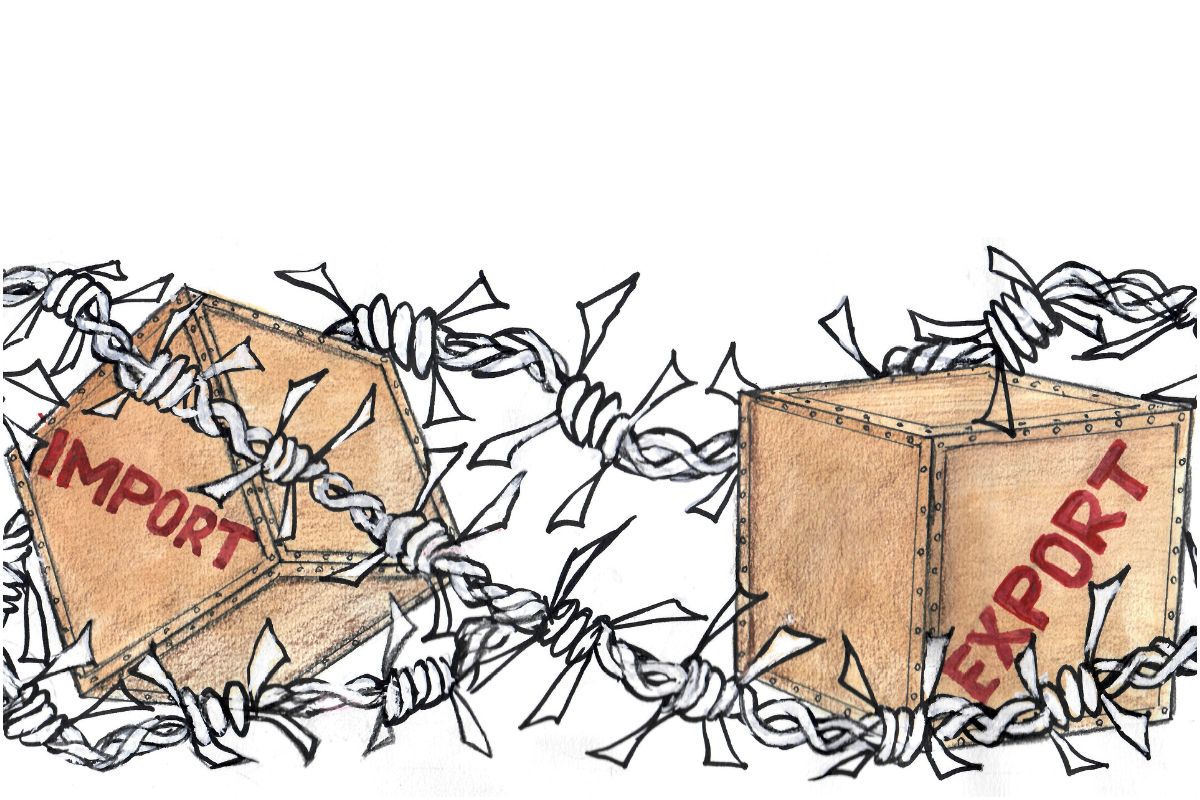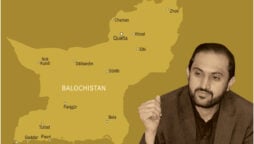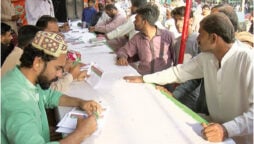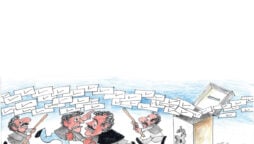
An Economic Maelstrom
Unless immediate and harsh remedial financial measures are taken, Pakistan is staring bankruptcy in the face
Since March 2022, cash-strapped Pakistan has stopped the repatriation of the dividends of most of the multinational companies operating here, amounting to an estimated one billion dollars. Similarly, Pakistani businesses operating franchises of global international brands are unable to pay millions of dollars in royalties to their foreign partners.
The Shehbaz Sharif government has also blocked more than 225 million dollars of foreign airlines’ dues. This has bracketed Pakistan with other struggling countries, including Nigeria, Bangladesh, Lebanon and Algeria, which have stopped the airline industry from repatriating funds, according to the International Air Transport Association (IATA).
The woes of an acute foreign exchange crunch do not stop here for Pakistan. Islamabad is aggressively curbing its imports and an estimated 4.0 billion dollars plus LCs (Letters of Credit) of importers are not being entertained by the banks.
“This is the worst economic crisis to hit Pakistan in its entire history,” a senior leader of the ruling Pakistan Muslim League-Nawaz (PML-N) admitted while talking to Bol News. “We are not able to operate as a normal country. Even our Finance Minister (Ishaq Dar) has realised that matters are beyond his control. This explains his outburst against the IMF (International Monetary Fund),” he said, requesting anonymity.
Some leading economic experts, including Shabbar Zaidi, a former chairman of the Federal Board of Revenue, are saying that while the country has managed to avoid sovereign debt default for now, it has already gone into a technical default because of its inability to meet some of its foreign exchange liabilities.
“People made fun of me when a few months ago I said that Pakistan is now a bankrupt country,” said Zaidi. “But now we can all see that the way the ruling elite is trying to manage its affairs, Pakistan is no longer a financially viable country.”
Zaidi added that Pakistan is likely to meet its foreign debt obligation through a rollover of loans and borrowing a few billion dollars from friendly countries, but this is not a strategy to pull the country out of a continued boom and bust cycle. “All those reforms which can pull the country out of its economic woes are not even on the agenda of the decision-makers,” he said.
However, Dr. Ashfaque Hasan Khan, one of Pakistan’s leading economists, said that a country can go into technical default only if it is unable to pay its foreign debt. “The delaying of payments for services and goods and prioritising imports is called managing the accounts at a time of an acute shortage of money,” he contended. “So far Pakistan has been able to meet its foreign debt obligations… and going forward, it is expected that it will be able to negotiate a rollover of a major portion of its foreign debt.”
But rolling over loans and new borrowing to service the old one cannot be called a strategy. It is temporary fire-fighting which will push the country into an even greater economic crisis.
According to State Bank of Pakistan figures, in the first four months (July-October) of fiscal 2022-23 (July-June), foreign companies repatriated dividends/profits worth 71 million dollars, compared to 566.6 million repatriated during the same period in fiscal 2021-22. This alone shows a drop of nearly 495 million dollars in repatriation.
Mohammed Sohail, chief executive of Topline Securities, a brokerage house in Karachi, said that it is not the first time that Islamabad has stopped repatriation of dividends of multinational companies and royalties to foreign partners of local businesses. “The same happened in 2008, 2013 and 2019, but temporarily. So, this is the fourth time in the past two decades the country is going through this phase, though this time around the situation is much tougher,” he said.
In 1998-99, Pakistan had also faced an acute foreign exchange crunch, but that was due to the international sanctions imposed on the country following its nuclear tests in response to India’s nuclear explosions.
However, this time around the economic situation is much graver against the backdrop of continuing political instability and uncertainty.
The real problem is that the beleaguered Shehbaz Sharif government appears without a comprehensive roadmap to pull the country out of the crisis. Since it assumed power in April 2022, all the macro-economic numbers have nose-dived. The country’s record floods have only compounded the economic problems.
Ironically, Pakistan’s economic troubles have busted the myth that the PML-N has an experienced and efficient team to manage the country. The economic stress has also led to infighting within the PML-N, with former Finance Minister, Miftah Ismail, openly criticising how Finance Minister Ishaq Dar has been managing the economy. On his part, Dar has blamed Miftah for aggravating the economic crisis by pursuing policies which no political party can afford if it has to go for elections within the next few months.
Since Dar has assumed charge of the Finance Ministry, he has tried to artificially prop up the rupee, which has not only created greater volatility in the currency market, but also created a booming black market.
In one of his articles, Miftah Ismail wrote that “today, there is a large and persistent difference between the open market and the interbank exchange rates. This suggests that the State Bank is informally guiding banks on the exchange rate. The large difference is also detrimental to our exports and remittances and is encouraging imports.”
According to a currency dealer, who asked not to be named, the official interbank market bank does not have dollars to meet the demand for the greenback. Despite a huge gap in the selling rates of dollars in the interbank and the official open currency market, they are also unavailable with the authorised currency dealers. But yes, one can buy dollars from the black market by paying 30 to 35 rupees more per dollar there,” he said.
This means that US currency is available between 260-270 rupees to a dollar in the black market, against 231-232 rupees quoted in the official currency market.
“There are no legal sellers of dollars in the market… everyone is a buyer,” said the currency dealer.
The creation of the black market has further dried up the dollar supply, as the Pakistani diaspora, instead of using the legal banking channel, is now increasingly using “hawala and hundi” to transfer funds as they give better returns.
In July-October FY23, remittances fell to 9.9 billion dollars, down 8.6 per cent from 10.827 billion in July-October FY22. The declining trend of remittances is all set to continue in the coming days and weeks as the black market offers better exchange rates, the currency dealer predicted.
With Pakistan sitting on less than 7.0 billion dollars foreign exchange reserves – an amount which can only cover less than one month of imports – the Pakistani rupee is all set to remain under tremendous pressure. This 7.0 billion of reserves includes 3.0 billion dollars placed by Saudi Arabia to prop up the reserves.
“The situation is really dangerous as there can be a rush on the banks for withdrawals of deposits, especially on foreign currency accounts,” said a leading economist, requesting anonymity.
Dar’s strategy or the lack of it will have long-term disastrous repercussions for the economy.
In the words of a PML-N leader, who spoke on the condition of anonymity, the economy has come to a grinding halt. “The suppression of imports will hit the FBR’s revenue collection. The blocking of the repatriation of multinationals will further erode the confidence of foreign investors in Pakistan… already the FDI (foreign direct investment) has become almost non-existent. Even our domestic investors and businesspeople are nervous and not prepared to bet on Pakistan. Many of our educated youngsters and professionals want to leave Pakistan because of this uncertainty,” he said.
Experts say that Pakistan’s economic crisis started worsening since efforts were launched to oust the Imran Khan government earlier this year, and now it has snowballed into a massive and unprecedented challenge for the country.
There are no quick fixes out of the situation. Only a genuine set of reforms can bail us out. But an unpopular and controversial government, which is surviving on a day-to-day basis, cannot lead the process of reforms. The process of Pakistan’s economic recovery can only start once political stability is restored in the country. Only an elected and popular government with a solid five-year mandate can do the job by taking unpopular measures. And the process of repair work starts with the installation of a caretaker government, which can lead the country towards free, fair and transparent general elections. But so far, Pakistan’s main stakeholders, including politicians and the Establishment, have been unable to find a middle ground which can lead the process of change. Therefore, times ahead for Pakistan are likely to get tougher as the Shehbaz Sharif-led government continues to hang on to power amidst growing political confrontation and polarisation.
Catch all the National Nerve News, Breaking News Event and Latest News Updates on The BOL News
Download The BOL News App to get the Daily News Update & Live News.












 Read the complete story text.
Read the complete story text. Listen to audio of the story.
Listen to audio of the story.